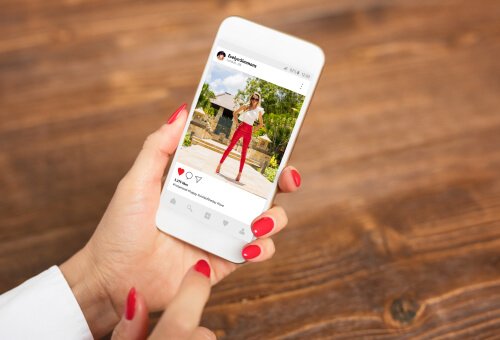Instagram: The Disintegrated Ego

We don’t know if, within a few years, social media will rank as one of the most harmful and useless elements of the Internet. Perhaps studies will keep on revealing that social media platforms such as Instagram are detrimental to physical and mental health.
We still don’t have enough data to support a definitive conclusion. But many investigations already point towards some important facts about how we use social media. It seems that social media platforms affect psychological health. The degree depends on the personality of the user, the amount of time they spend on them, the social media platforms they use, or the age they began to use social media for the first time.
We know that social media platforms can become addictive. Like any other substance, they seem to act on the neural circuits of reinforcement. Their use can even lead to tolerance and withdrawal.
Different social networks, different effects
We’ve all sensed that feeling of inferiority, restlessness, and even anxiety when we use social media. This is either due to the negative comments of Internet trolls or the unrealistic expectations set by photoshopped pictures. Although you may have already suspected the negative impact of social networks on your mental health, a new study has raised serious concerns.

This study concluded that Facebook, Snapchat, Instagram, and Twitter can cause serious mental health damage on people from the ages of 14 to 24. Instagram is the most harmful social network for young people, according to the study published by two organizations, the Royal Society for Public Health and the Young Health Movement.
To carry out the study, the researchers asked nearly 1500 people from the ages of 14 to 24 to share the impact of five social networks on their lives. There were 14 different criteria, including loneliness, self-perception, anxiety, stress, and harassment. Out of all of them, Instagram had the worst rating.
However, Snapchat, Facebook, and Twitter weren’t far behind. These three networks negatively impacted users’ well-being. Researchers believe that these networks promote anxiety. The only social network the researchers considered had a positive impact was YouTube. However, some users considered that the site and its content made them sleep less than they should.
“It’s interesting to see Instagram and Snapchat ranking as the worst for mental health and wellbeing – both platforms are very image-focused and it appears they may be driving feelings of inadequacy and anxiety in young people,” said Shirley Cramer, Chief Executive of the Royal Society for Public Health.
Instagram and the disintegrated self
It may seem that Instagram has less content than other social networks. This platform’s biggest component is pictures. You follow friends or acquaintances, or, through hashtags and public profiles, you can also see celebrities and other people who are famous on Instagram. They’re available to everyone.
This is the social network with the highest number of young users. This implies significant risks since these young people are immersed in the process of personal development. Likewise, they’re in a stage where they’re acquiring their values. Social media teaches them that hard work and dedication to a profession is less valuable than posing for pictures.
Some social networks are no longer a means to relate to others. Rather, they’ve become advertising spaces for many brands. Social networks have become business networks and users are its main product and consumers. Many companies even see business opportunities in mothers who advertise the brands their children wear. By doing so, they convert the children (often minors) into products.
Fake it till you make it
If someone sees a superficial and vain person without an actual job who has thousands of followers, they may think they’re worth imitating. They’ll begin acting unnaturally and ‘liking’ things they’re not really interested in. Consequently, their weak ego can become resentful, fragmented, and disintegrated.
On this social media platform, there are too many photos of clothes, houses, trips, friends, jokes, kisses, and hugs. For every account that provides some uniqueness, there are ten accounts that try to influence you through a powerful, seductive, and disguised vanity.
You can’t resist looking at nice pictures every once in a while. It’s understandable that you’d look at them and want to have a similar picture of your own. You may even want to go on a trip like the ones you see. But what’s the job market like today? What kind of income do young people have to have in order to live decently? How much of a difference is there between the pictures on social media and real life? Do you really want those things? Do you really need them in your life?

Professionals need to start acting
When the social networks you spend a lot of time on don’t accurately represent anything real, doubts manifest about your understanding of life, society, and the value of effort and hard work.
People see attractive values in this ‘virtual’ reality that can’t be found in real life. Thus, they begin to reconsider important values in their life such as education, hard work, effort, or dedication.
This text is provided for informational purposes only and does not replace consultation with a professional. If in doubt, consult your specialist.








